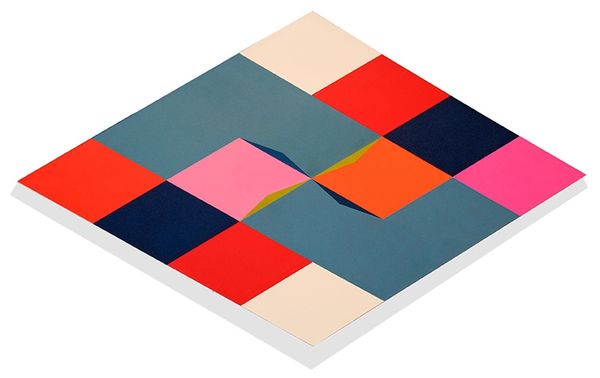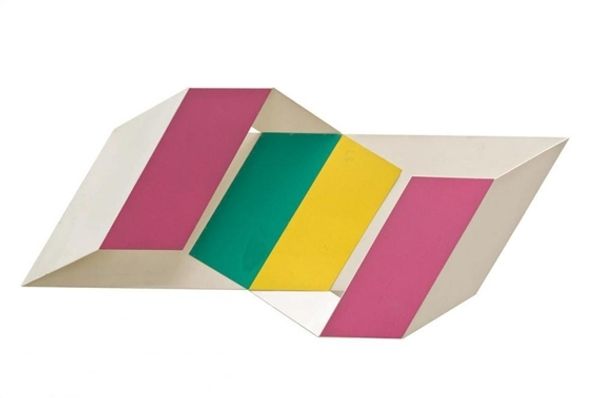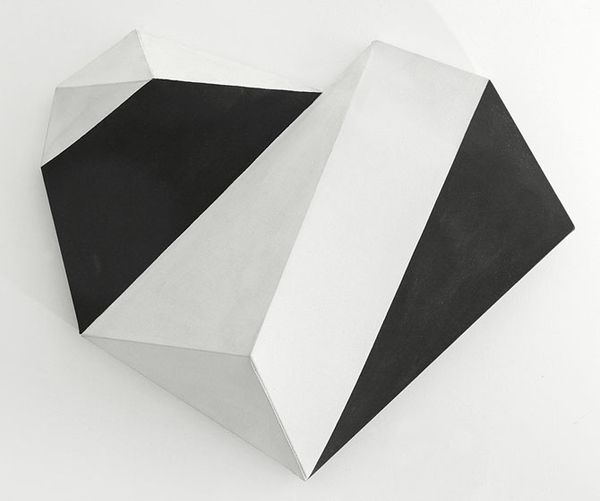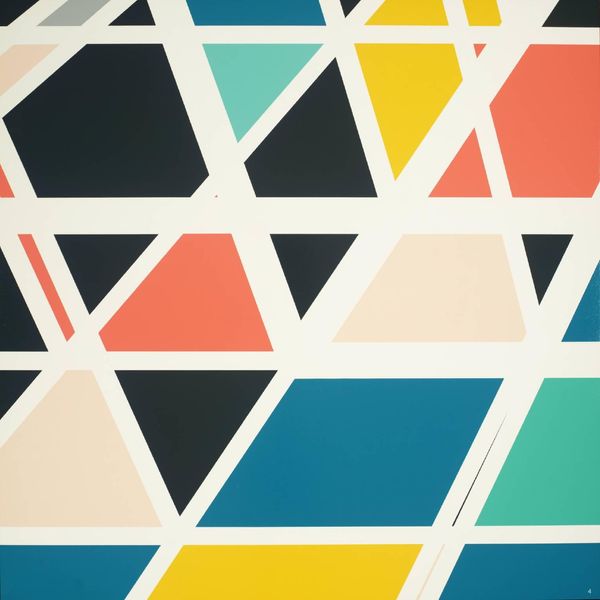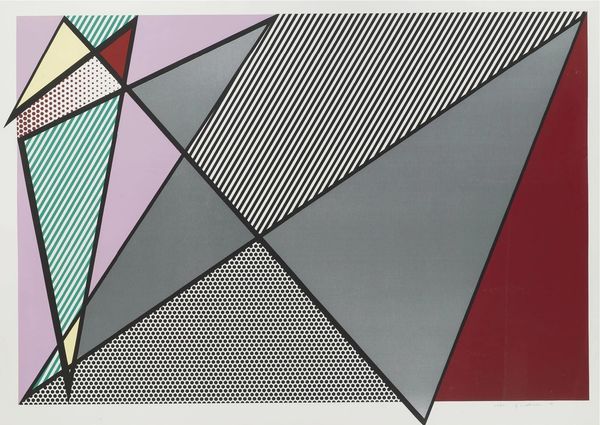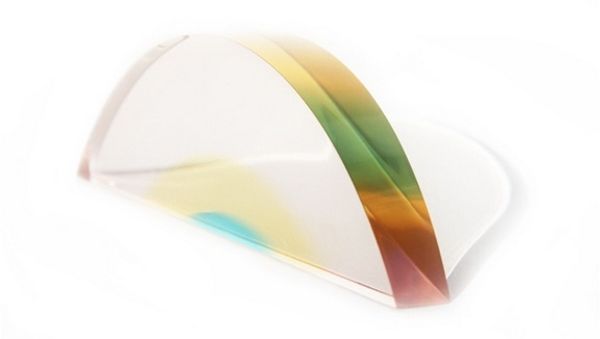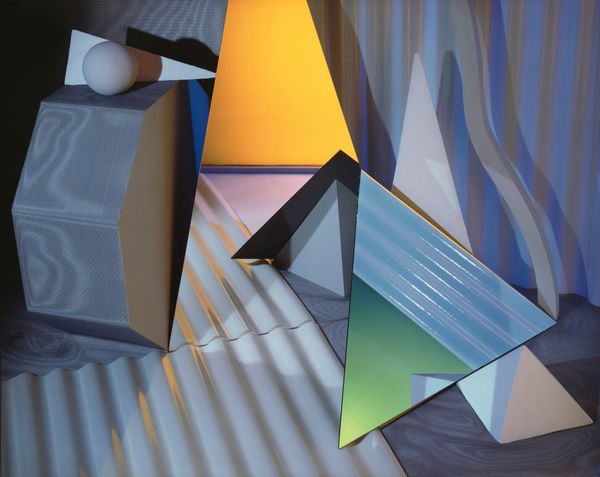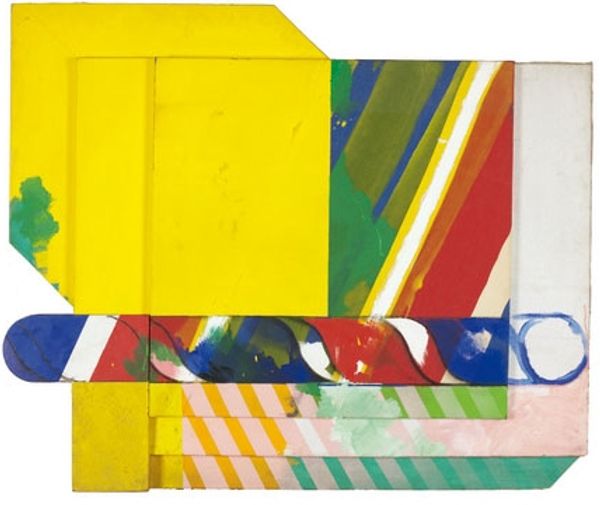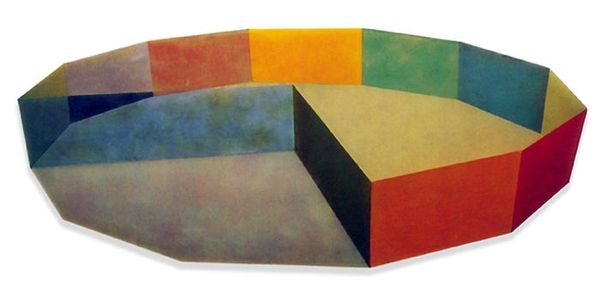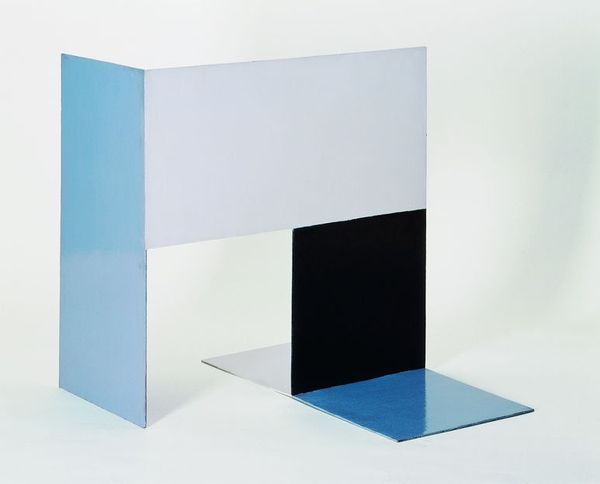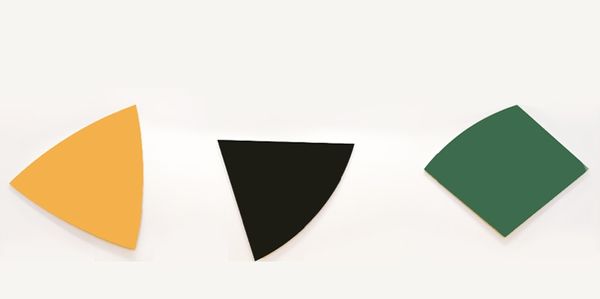
acrylic-paint
#
abstract-expressionism
#
acrylic-paint
#
form
#
geometric-abstraction
#
modernism
#
hard-edge-painting
Copyright: Thomas Downing,Fair Use
Editor: This is “Fold One,” created in 1968 by Thomas Downing, using acrylic paint. The hard-edged forms and vivid colors create a very dynamic composition. What jumps out at you? Curator: The unfolding geometric shapes resonate deeply. I see echoes of Mondrian, but stripped of his spirituality, perhaps reflecting a post-war detachment. The stark, almost artificial colors speak to a growing sense of synthetic environments and a detachment from natural forms. What do you make of the implied depth created solely through color and line? Editor: I find it a bit unsettling – it hints at three dimensions but remains resolutely flat, like a stage set with no actors. Is this disorientation intentional, do you think? Curator: Possibly. Or perhaps Downing sought to represent a world in constant flux, folding in on itself, reflecting anxieties of the era. The specific colours might also evoke particular emotions: a cooling turquoise suggesting detachment, a vivid green speaking of hope? Consider how those associations might shape our reading of the work. Editor: That’s a fascinating way to look at it. I never considered how the color choices play into this. So much more than just abstract shapes on a canvas! Curator: Indeed. It’s a journey into cultural memory, represented by simple shapes, to better decode ourselves. I appreciate how we can reinterpret our history again and again in modern artworks.
Comments
No comments
Be the first to comment and join the conversation on the ultimate creative platform.
